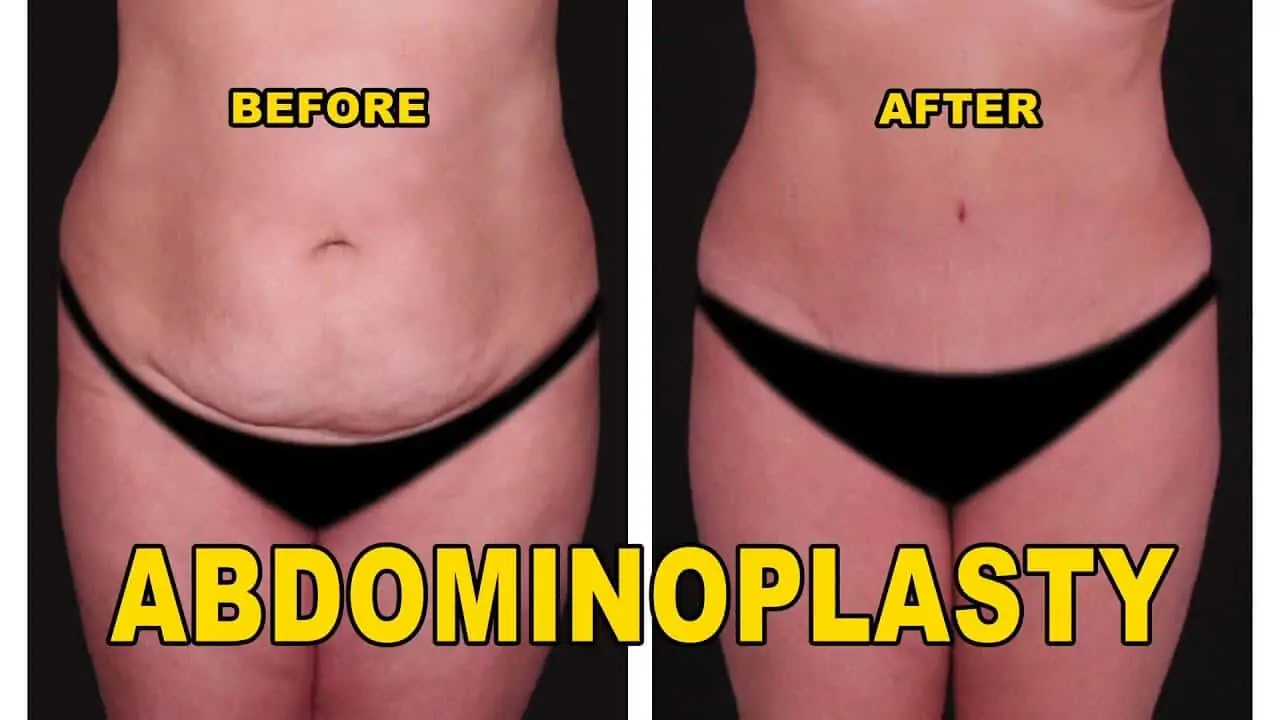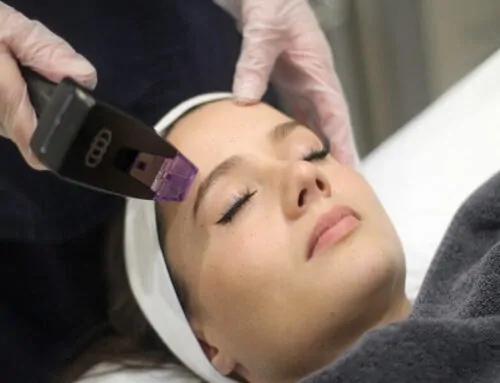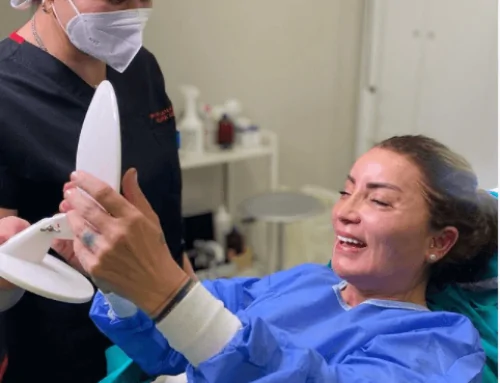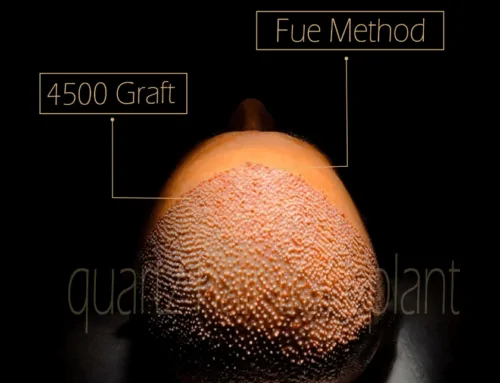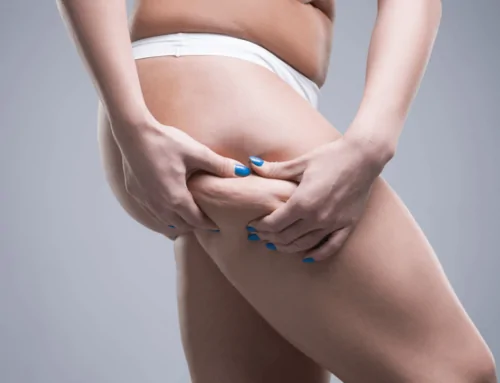Abdominoplasty, also known as a tummy tuck, is a surgical procedure that involves removing excess skin and fat from the abdominal area and tightening the muscles of the abdominal wall.
It is typically performed to improve the appearance of the abdominal region and may be recommended for people who have excess skin or fat in the abdominal area due to significant weight loss, pregnancy, or aging.
During the procedure, the surgeon will make an incision in the lower abdominal area, remove excess skin and fat, and then tighten the muscles of the abdominal wall by pulling them together and suturing them in place.
The skin is then repositioned and excess skin is trimmed away. The incision is closed with sutures, and a compression garment is often worn to help support the abdominal muscles and promote healing.
Abdominoplasty is a major surgical procedure and is typically performed under general anesthesia. It can take several hours to complete and may require a hospital stay of a few days.
The recovery period after abdominoplasty can take several weeks, and patients may experience discomfort and swelling during this time. It is important to follow the surgeon’s instructions for care after the procedure to ensure proper healing and optimal results.
What is the Difference Between Tummy Tuck and Abdominoplasty?
Tummy tuck and abdominoplasty are two terms that are often used interchangeably to refer to the same surgical procedure. Both terms refer to a surgical procedure that involves removing excess skin and fat from the abdominal area and tightening the muscles of the abdominal wall.
The procedure is usually performed to improve the appearance of the abdominal area, and it may be recommended for people who have excess skin or fat in the abdominal area due to significant weight loss, pregnancy, or aging.
The procedure involves making an incision in the lower abdominal area, removing excess skin and fat, and then tightening the muscles of the abdominal wall by pulling them together and suturing them in place.
There is no significant difference between tummy tuck and abdominoplasty. Both terms refer to the same procedure and can be used interchangeably.
What is the Best Tummy Tuck Procedure?
There is no one “best” tummy tuck procedure that is suitable for all patients. The best tummy tuck procedure for an individual will depend on their specific needs and goals, as well as the recommendations of their surgeon.
There are several different types of tummy tuck procedures that a surgeon may recommend, depending on the patient’s needs and goals. These include:
- Full tummy tuck: This procedure involves making an incision across the lower abdomen, removing excess skin and fat, and tightening the muscles of the abdominal wall. It is typically recommended for patients who have excess skin and fat in the lower abdominal area and who have weakened or separated abdominal muscles.
- Mini tummy tuck: This procedure involves making a smaller incision in the lower abdominal area and removing excess skin and fat from the lower abdomen only. It is typically recommended for patients who have a small amount of excess skin and fat in the lower abdominal area.
- Extended tummy tuck: This procedure is similar to a full tummy tuck, but it involves making an additional incision around the sides of the waist to remove excess skin and fat from the flanks and lower back. It is typically recommended for patients who have excess skin and fat in the lower abdominal area as well as the flanks and lower back.
- Reverse tummy tuck: This procedure involves making an incision in the upper abdominal area and removing excess skin and fat from the upper abdomen. It is typically recommended for patients who have excess skin and fat in the upper abdominal area and a relatively flat lower abdomen.
It is important to discuss your specific needs and goals with your surgeon and to follow their recommendations in order to achieve the best possible results from your tummy tuck procedure.
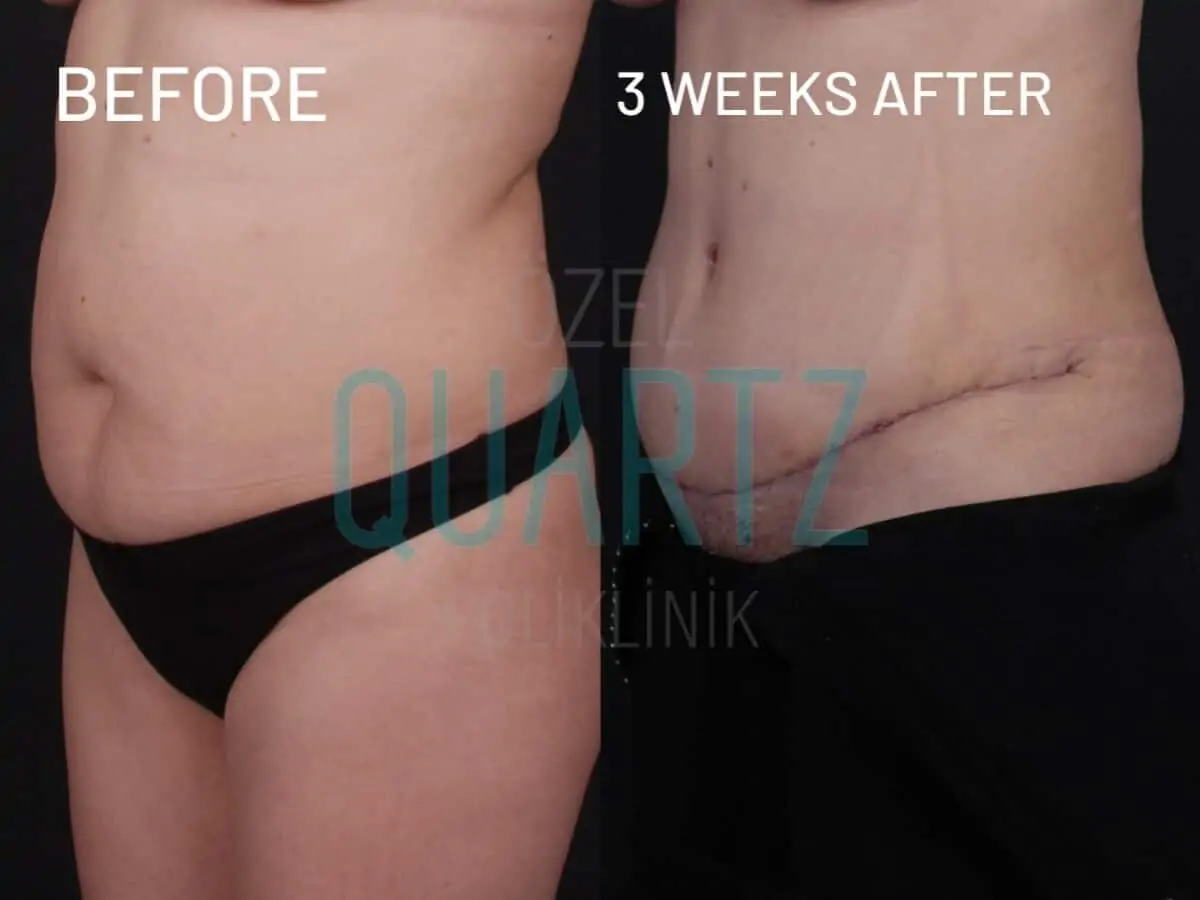 Is an Abdominoplasty a Major Surgery?
Is an Abdominoplasty a Major Surgery?
Yes, an abdominoplasty is a major surgical procedure. It involves making an incision in the lower abdominal area, removing excess skin and fat, and tightening the muscles of the abdominal wall.
The procedure can take several hours to complete and is typically performed under general anesthesia.
As with any major surgery, an abdominoplasty carries risks and potential complications, such as infection, bleeding, and allergic reactions to anesthesia.
It is important to discuss these risks with your surgeon before the procedure and to carefully follow their instructions for care before and after the surgery to minimize the risk of complications.
After the procedure, patients may experience discomfort, swelling, and bruising in the abdominal area. It is important to follow the surgeon’s instructions for care after the procedure to ensure proper healing and optimal results.
The recovery period after an abdominoplasty can take several weeks, and patients may need to take time off work and other activities to allow for proper healing.
Is Abdominoplasty Very Painful?
Most patients experience some discomfort and pain after an abdominoplasty, also known as a tummy tuck, as the abdominal muscles and skin are tightened and the incision is closed.
The degree of pain experienced after the procedure can vary from person to person, and may depend on the individual’s tolerance for pain, the extent of the procedure, and the patient’s overall health.
To help manage pain after the procedure, the surgeon may prescribe pain medication. It is important to take the medication as directed and to inform the surgeon if the pain is not well-controlled. Most patients find that their discomfort and pain improve significantly within the first week after the procedure.
It is important to follow the surgeon’s instructions for care after the procedure, including any recommendations for pain management, to ensure proper healing and minimize discomfort.
It is also important to communicate any concerns about pain to the surgeon, as they can help manage discomfort and ensure that the patient is comfortable during the recovery process.
How Much do You Have to Weigh to Get a Tummy Tuck?
There is no specific weight requirement for a tummy tuck, also known as an abdominoplasty. The procedure is typically recommended for people who have excess skin or fat in the abdominal area due to significant weight loss, pregnancy, or aging, regardless of their weight.
However, it is generally recommended that patients be at a stable, healthy weight before undergoing a tummy tuck. This is because significant weight loss or gain after the procedure can negatively impact the results.
It is important to discuss your weight and any plans for weight loss or gain with your surgeon before the procedure to ensure that it is the right option for you.
It is also important to understand that a tummy tuck is not a weight loss procedure and should not be viewed as a substitute for a healthy diet and regular exercise. The procedure can help improve the appearance of the abdominal area, but it will not necessarily lead to significant weight loss.
Does Abdominoplasty Remove Fat?
An abdominoplasty involves the removal of excess skin and fat from the abdominal area. During the procedure, the surgeon will make an incision in the lower abdominal area, remove excess skin and fat, and then tighten the muscles of the abdominal wall by pulling them together and suturing them in place. The skin is then repositioned and excess skin is trimmed away.
The amount of fat that is removed during an abdominoplasty will depend on the individual’s specific needs and goals, as well as the recommendations of the surgeon.
Some patients may have a significant amount of excess fat in the abdominal area, while others may have only a small amount. The surgeon will work with the patient to determine the appropriate amount of fat to remove in order to achieve the desired results.
It is important to understand that an abdominoplasty is not a weight loss procedure and should not be viewed as a substitute for a healthy diet and regular exercise. The procedure can help improve the appearance of the abdominal area, but it will not necessarily lead to significant weight loss.
How To Get Rid of Postpartum Belly?
There are several steps that you can take to help get rid of a postpartum belly, including:
- Exercise regularly: Engaging in regular physical activity, such as cardiovascular exercise and strength training, can help you burn calories and build muscle, which can help you lose weight and tone your abdominal muscles.
- Eat a healthy diet: Following a balanced, nutritious diet that is low in processed foods and high in whole, unprocessed foods can help you maintain a healthy weight and support your overall health.
- Stay hydrated: Drinking plenty of water can help you stay hydrated and support weight loss efforts.
- Get enough sleep: Adequate sleep is important for overall health and can help you maintain a healthy weight.
- Consider medical treatments: In some cases, a medical treatment such as a tummy tuck (abdominoplasty) may be recommended to remove excess skin and fat from the abdominal area. However, it is important to discuss your options with a healthcare provider before pursuing any medical treatment.
It is important to be patient and allow your body time to heal after giving birth. It may take several months or more for your belly to return to its pre-pregnancy shape. It is also important to be consistent with your efforts and to seek the guidance of a healthcare provider or a qualified fitness professional if you have any concerns about your postpartum weight loss or abdominal appearance.
How to Tighten Loose Skin After Weight Loss?
There are several steps that you can take to help tighten loose skin after weight loss, including:
- Engage in regular physical activity: Exercise can help build muscle, which can help firm and tone the skin. Cardiovascular exercise and strength training are both important for overall health and can help improve the appearance of the skin.
- Eat a healthy diet: A nutritious diet that is high in protein, healthy fats, and essential vitamins and minerals can support skin health and promote collagen production.
- Stay hydrated: Drinking plenty of water can help keep the skin hydrated and improve its elasticity.
- Use skin care products: Using skin care products that contain ingredients such as retinol, alpha hydroxy acids, and vitamin C can help stimulate collagen production and improve the appearance of the skin.
- Consider medical treatments: In some cases, medical treatments such as laser skin tightening or a tummy tuck (abdominoplasty) may be recommended to tighten loose skin. However, it is important to discuss your options with a healthcare provider before pursuing any medical treatment.
It is important to be patient and to allow your body time to adjust to your new weight. It may take several months or more for your skin to fully tighten after significant weight loss.
It is also important to be consistent with your efforts and to seek the guidance of a healthcare provider or a qualified fitness professional if you have any concerns about your skin or overall health.
How Many Sizes Will I go Down After a Tummy Tuck?
It is difficult to predict exactly how many sizes you will go down after a tummy tuck, also known as an abdominoplasty. The amount of skin and fat that is removed during the procedure will depend on your specific needs and goals, as well as the recommendations of your surgeon. Some patients may have a significant amount of excess skin and fat in the abdominal area, while others may have only a small amount.
It is important to understand that a tummy tuck is not a weight loss procedure and should not be viewed as a substitute for a healthy diet and regular exercise.
The procedure can help improve the appearance of the abdominal area, but it will not necessarily lead to significant weight loss or a change in clothing size.
It is also important to be realistic about your expectations for the procedure and to understand that the results may not be immediately noticeable.
It may take several weeks or more for swelling and bruising to resolve and for the final results to be apparent. It is important to follow the surgeon’s instructions for care after the procedure and to be patient during the recovery process.
Can Loose Skin from Weight Loss be Removed?
Loose skin that occurs as a result of weight loss can sometimes be removed through surgery. There are several types of surgical procedures that can be used to remove loose skin, including:
- Tummy tuck (abdominoplasty): This procedure involves removing excess skin and fat from the abdominal area and tightening the muscles of the abdominal wall.
- Arm lift (brachioplasty): This procedure involves removing excess skin and fat from the upper arms.
- Thigh lift: This procedure involves removing excess skin and fat from the thighs.
- Lower body lift: This procedure involves removing excess skin and fat from the lower body, including the buttocks, thighs, and abdominal area.
It is important to understand that these procedures are major surgeries and carry risks and potential complications, such as infection, bleeding, and allergic reactions to anesthesia.
It is important to discuss the risks and potential benefits of the procedure with a qualified plastic surgeon and to carefully consider whether the procedure is right for you.
It is also important to be realistic about the results of the procedure and to understand that it may not be possible to completely remove all loose skin.
It may take several months or more for swelling and bruising to resolve and for the final results to be apparent. It is important to follow the surgeon’s instructions for care after the procedure and to be patient during the recovery process.
How Long Does Tummy Tuck Last?
The results of a tummy tuck are generally long-lasting. However, the procedure does not stop the aging process, and it is possible for the abdominal area to change over time due to factors such as weight gain or loss, pregnancy, or the natural effects of aging.
To help maintain the results of a tummy tuck, it is important to engage in a healthy lifestyle, including regular physical activity and a balanced diet. It is also important to avoid significant weight gain or loss, as these can impact the results of the procedure.
It is important to be realistic about the results of the procedure and to understand that it may not be possible to achieve or maintain the same level of results as a younger person.
It is also important to understand that the procedure does not stop the aging process, and the abdominal area may change over time due to factors such as weight gain or loss, pregnancy, or the natural effects of aging.
Will My Tummy be Flat After Tummy Tuck?
A tummy tuck (abdominoplasty) can help improve the appearance of the abdominal area and can make the tummy flatter. The procedure involves removing excess skin and fat from the abdominal area and tightening the muscles of the abdominal wall.
The extent to which the tummy will be flattened after the procedure will depend on the individual’s specific needs and goals, as well as the recommendations of the surgeon.
Some patients may have a significant amount of excess skin and fat in the abdominal area, while others may have only a small amount. The surgeon will work with the patient to determine the appropriate amount of skin and fat to remove in order to achieve the desired results.
The procedure can help improve the appearance of the abdominal area, but it will not necessarily lead to a completely flat tummy. It is also important to understand that the procedure does not stop the aging process, and the abdominal area may change over time due to factors such as weight gain or loss, pregnancy, or the natural effects of aging.
Does Sagging Occur After Local Abdominal Liposuction?
Liposuction is a surgical procedure that involves removing excess fat from specific areas of the body using a hollow stainless-steel tube called a cannula. Abdominal liposuction is a procedure that involves removing excess fat from the abdominal area.
It is possible for sagging to occur after abdominal liposuction, although this is generally more common after more extensive procedures, such as a tummy tuck (abdominoplasty).
Sagging may occur if the skin is not able to contract or shrink back to its normal position after the fat is removed. This may be more likely to occur in people who have lost a significant amount of weight, who have stretched or damaged skin due to pregnancy or other factors, or who have naturally loose skin.
To help reduce the risk of sagging after abdominal liposuction, it is important to follow the surgeon’s instructions for care after the procedure and to be patient during the recovery process.
It is also important to be realistic about the results of the procedure and to understand that it may not be possible to achieve a completely flat tummy.
Can Abdominoplasty and Arm Lift be Combined?
Yes, it is possible for an abdominoplasty and an arm lift, also known as a brachioplasty, to be combined into a single surgical procedure. This type of procedure is often referred to as a “mommy makeover” and is designed to address multiple areas of the body that may have been affected by pregnancy, weight loss, or the natural effects of aging.
Combining an abdominoplasty and an arm lift into a single procedure can be a convenient and cost-effective way to address multiple areas of concern at the same time.
It can also help reduce the overall recovery time by allowing the patient to undergo both procedures at the same time, rather than having to schedule separate surgeries.
However, it is important to understand that combining an abdominoplasty and an arm lift into a single procedure is a major surgery and carries risks and potential complications, such as infection, bleeding, and allergic reactions to anesthesia.
It is important to discuss the risks and potential benefits of the procedure with a qualified plastic surgeon and to carefully consider whether the procedure is right for you.
How Much Weight Can You Lose With Abdominoplasty?
An abdominoplasty, is a surgical procedure that involves removing excess skin and fat from the abdominal area and tightening the muscles of the abdominal wall. The procedure can help improve the appearance of the abdominal area and can create a flatter, more toned appearance.
However, it is important to understand that an abdominoplasty is not a weight loss procedure and should not be viewed as a substitute for a healthy diet and regular exercise. The procedure does not involve the removal of a large amount of fat, and it is generally not expected to result in significant weight loss.
The amount of weight that a person may lose as a result of an abdominoplasty will depend on the individual’s specific needs and goals, as well as the recommendations of the surgeon.
Some patients may have a significant amount of excess skin and fat in the abdominal area, while others may have only a small amount. The surgeon will work with the patient to determine the appropriate amount of skin and fat to remove in order to achieve the desired results.
It is important to be realistic about the results of the procedure and to understand that it may not lead to significant weight loss. The procedure can help improve the appearance of the abdominal area, but it will not necessarily lead to significant weight loss.
It is also important to understand that the procedure does not stop the aging process, and the abdominal area may change over time due to factors such as weight gain or loss, pregnancy, or the natural effects of aging.
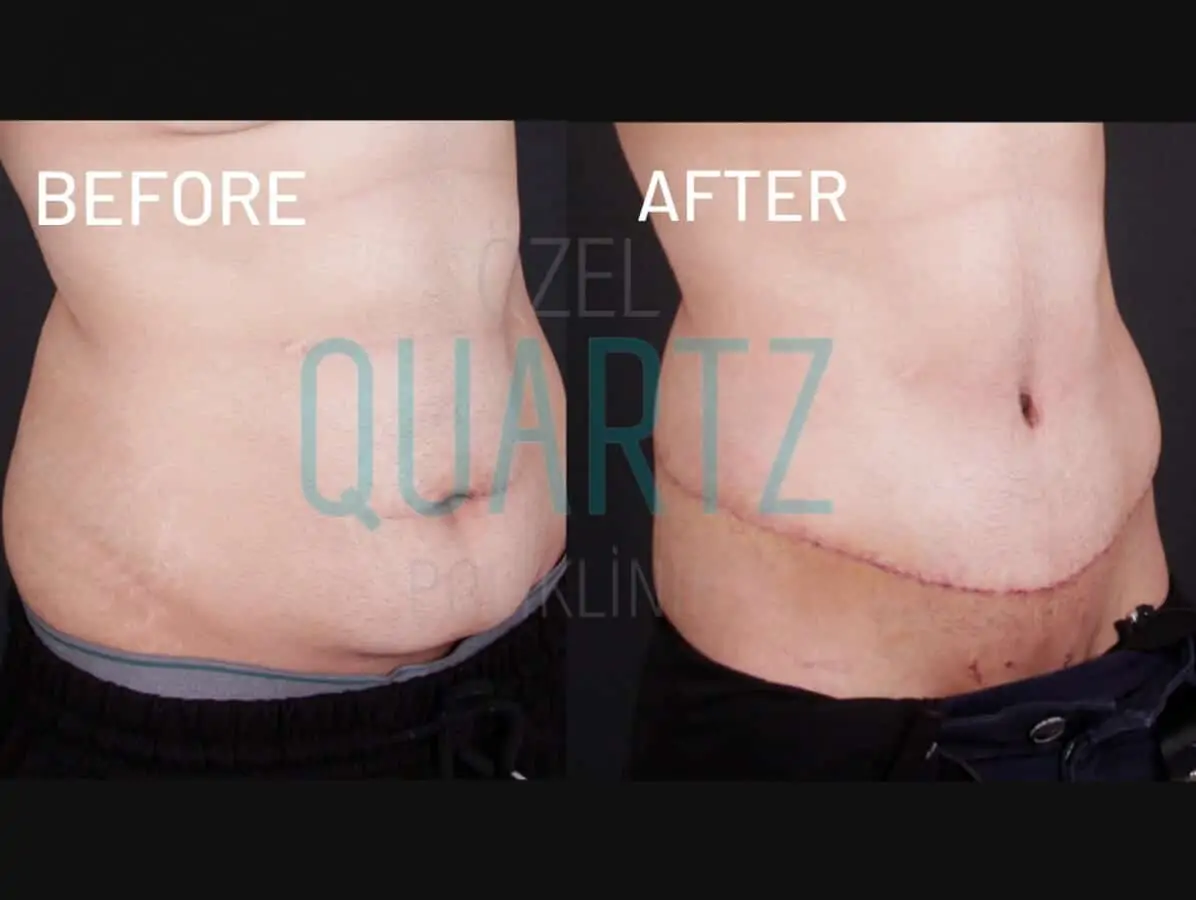 Is There Any Scar After Tummy Tuck?
Is There Any Scar After Tummy Tuck?
Yes, a tummy tuck typically involves making an incision in the lower abdominal area. As a result, there will be a scar after the procedure.
The size and location of the scar will depend on the individual’s specific needs and goals, as well as the recommendations of the surgeon.
The scar from a tummy tuck is usually located below the bikini line, so it can generally be concealed by clothing.
In some cases, the scar may be located in a more visible area, such as the upper abdominal area.
The surgeon will work with the patient to determine the best location for the incision in order to achieve the desired results.
It is important to understand that the scar will be visible after the procedure and that it may take several months or more for the scar to fully heal and fade.
It is also important to follow the surgeon’s instructions for care after the procedure, including any recommendations for scar management, to help ensure proper healing and minimize the appearance of the scar.
How Long Does Tummy Tuck Scar Take to Fade?
The scar from a tummy tuck will typically take several months or more to fade. The size and appearance of the scar will depend on the individual’s specific needs and goals, as well as the recommendations of the surgeon.
After the procedure, the scar may be red, raised, and somewhat tender. It is important to follow the surgeon’s instructions for care after the procedure, including any recommendations for scar management, to help ensure proper healing and minimize the appearance of the scar.
As the scar begins to heal, it may become less red and raised, and the tenderness may subside. It may take several months or more for the scar to fully heal and fade. In some cases, the scar may be more noticeable initially, but it will generally fade over time.
It is important to be patient and to allow the scar time to heal and fade. It is also important to understand that the scar will not disappear completely and that it may always be noticeable to some degree. However, the appearance of the scar can generally be improved with proper care and scar management.
Is a Tummy Tuck Scar Worth It?
A tummy tuck is a surgical procedure that involves making an incision in the lower abdominal area in order to remove excess skin and fat and tighten the muscles of the abdominal wall. As a result, there will be a scar after the procedure.
Whether or not the scar from a tummy tuck is worth it is a personal decision that will depend on an individual’s specific needs and goals, as well as their expectations for the procedure.
Some people may be willing to accept a scar in exchange for the improvements in the appearance of the abdominal area that the procedure can provide. Others may be less willing to accept a scar, even if the procedure can help improve the appearance of the abdominal area.
It is important to carefully consider the risks and potential benefits of the procedure, including the likelihood and appearance of scarring, and to discuss these issues with a qualified plastic surgeon before deciding whether or not to undergo the procedure.
It is also important to be realistic about the results of the procedure and to understand that it may not be possible to achieve a completely flat tummy or to completely eliminate all excess skin and fat from the abdominal area.
Can I Get Tummy Tuck if I Have Keloids?
A tummy tuck involves making an incision in the lower abdominal area in order to remove excess skin and fat and tighten the muscles of the abdominal wall.
If you have a history of keloids, which are raised scars that occur when the skin produces too much collagen during the healing process, you may be at a higher risk of developing a keloid after a tummy tuck.
It is important to discuss your history of keloids with your surgeon before undergoing a tummy tuck. The surgeon may recommend taking steps to minimize the risk of developing a keloid, such as using a topical scar treatment or receiving a corticosteroid injection after the procedure.
It is also important to understand that there is no guarantee that a keloid will not occur after a tummy tuck, even with preventive measures.
If you are concerned about the risk of developing a keloid, it may be advisable to explore alternative treatment options that do not involve making an incision in the skin.
How Long Does It Take to Recover from Abdominoplasty?
The recovery time after an abdominoplasty can vary depending on the individual’s specific needs and goals, as well as the recommendations of the surgeon. In general, it may take several weeks or more for the swelling and bruising to resolve and for the final results to be apparent.
During the first few days after the procedure, the patient may experience some discomfort, swelling, and bruising. The surgeon will provide instructions for pain management and care after the procedure, including any recommendations for activity level and the use of compression garments.
It is important to follow the surgeon’s instructions for care after the procedure and to be patient during the recovery process. It may take several weeks or more for the swelling and bruising to resolve and for the final results to be apparent. It is also important to avoid strenuous activity and to take time to rest and allow the body to heal.
It is important to understand that recovery from an abdominoplasty is a gradual process and that it may take several weeks or more for the body to fully heal.
It is also important to be realistic about the results of the procedure and to understand that it may not be possible to achieve a completely flat tummy or to completely eliminate all excess skin and fat from the abdominal area.
What are the Side Effects of Abdominoplasty?
Like any surgery, an abdominoplasty carries risks and potential complications, including:
- Bleeding: There is a risk of bleeding after the procedure, which may require a blood transfusion or additional surgery to repair.
- Infection: There is a risk of infection after the procedure, which may require antibiotics or additional surgery to treat.
- Adverse reactions to anesthesia: There is a risk of adverse reactions to the anesthesia used during the procedure, including allergic reactions and complications such as nausea, vomiting, or respiratory problems.
- Scarring: There is a risk of scarring after the procedure, which may be more noticeable in people who have a history of keloids or other types of abnormal scarring.
- Changes in skin sensation: There is a risk of changes in skin sensation after the procedure, including numbness or tingling. This is usually temporary, but in some cases, it may be permanent.
- Fluid accumulation: There is a risk of fluid accumulation after the procedure, which may require drainage.
- Unsatisfactory results: There is a risk of unsatisfactory results after the procedure, including the possibility that the results may not be as desired or that additional surgery may be needed to correct problems.
It is important to discuss the risks and potential complications of the procedure with a qualified plastic surgeon before deciding whether
What Can You not do After a Tummy Tuck?
After a tummy tuck it is important to follow the surgeon’s instructions for care and to avoid certain activities in order to allow the body to heal properly and minimize the risk of complications.
Generally, it is recommended to avoid strenuous activity and heavy lifting for at least the first few weeks after the procedure. This may include activities such as running, weight lifting, and other high-impact exercises. It is also important to avoid exposure to extreme heat or cold and to avoid spending long periods of time in the sun.
It is also important to avoid sitting or standing in a hunched position, as this can put strain on the abdominal muscles and may cause discomfort. It may be necessary to sleep in a semi-upright position for the first few weeks after the procedure to help reduce swelling and discomfort.
It is important to follow the surgeon’s instructions for care after the procedure and to be patient during the recovery process. It may take several weeks or more for the swelling and bruising to resolve and for the final results to be apparent.
It is also important to understand that recovery from an abdominoplasty is a gradual process and that it may take several weeks or more for the body to fully heal.
How Long is Bed Rest After Tummy Tuck?
The recovery time after a tummy tuck can vary depending on the individual’s specific needs and goals, as well as the recommendations of the surgeon. In general, it is important to take time to rest and allow the body to heal after the procedure.
Bed rest is generally not required after a tummy tuck, and most people are able to return to their normal daily activities within a few days of the procedure.
However, it is important to avoid strenuous activity and heavy lifting for at least the first few weeks after the procedure. This may include activities such as running, weight lifting, and other high-impact exercises.
It is also important to avoid sitting or standing in a hunched position, as this can put strain on the abdominal muscles and may cause discomfort. It may be necessary to sleep in a semi-upright position for the first few weeks after the procedure to help reduce swelling and discomfort.
It may take several weeks or more for the swelling and bruising to resolve and for the final results to be apparent. It is also important to understand that recovery from an abdominoplasty is a gradual process and that it may take several weeks or more for the body to fully heal.
Should I Shower Every Day After Tummy Tuck?
After a tummy tuck, it is generally recommended to shower every day in order to keep the incision clean and dry. The surgeon will provide specific instructions for care after the procedure, including any recommendations for showering.
It is important to follow the surgeon’s instructions for care after the procedure, including any recommendations for showering and the use of any prescribed wound care products.
In general, it is recommended to avoid soaking the incision in water or getting it wet until the surgeon gives permission to do so. This may mean taking sponge baths or using a handheld showerhead until the incision has fully healed.
It is also important to avoid using hot water or applying direct pressure to the incision while showering. It is generally recommended to use lukewarm water and to gently pat the incision dry after showering.
How Soon After Tummy Tuck Can I Swim?
It is generally recommended to avoid swimming for at least the first few weeks after a tummy tuck. The incision may be tender and sensitive during this time, and exposing it to chlorine or other chemicals in a pool or other body of water may increase the risk of infection or other complications.
Once the incision has fully healed and the surgeon gives permission, it may be possible to return to activities such as swimming. However, it is important to take it easy and to avoid any activities that may cause discomfort or strain on the abdominal muscles. It is also important to protect the skin from the sun and to avoid spending long periods of time in the water.
When Can I Wear Normal Clothes After Tummy Tuck?
After a tummy tuck, it is generally recommended to wear loose, comfortable clothing for the first few weeks after the procedure. The surgeon will provide specific instructions for care after the procedure, including any recommendations for clothing.
It is generally recommended to avoid tight or constricting clothing, as this can put pressure on the incision and may cause discomfort. The surgeon may recommend wearing a compression garment or other type of support garment after the procedure to help reduce swelling and support the abdominal muscles.
Once the incision has fully healed and the surgeon gives permission, it may be possible to return to wearing normal clothing. However, it is important to avoid any clothing that is tight or constricting, as this can put strain on the abdominal muscles and may cause discomfort. It is also important to continue to protect the skin from the sun and to avoid exposing the incision to direct sunlight.
How Long Before I Can Stand Straight After Tummy Tuck?
After a tummy tuck, it is generally recommended to avoid standing in a hunched position or engaging in any activities that may put strain on the abdominal muscles for at least the first few weeks after the procedure.
The surgeon will provide specific instructions for care after the procedure, including any recommendations for activity level.
It is generally recommended to avoid strenuous activity and heavy lifting for at least the first few weeks after the procedure. This may include activities such as running, weight lifting, and other high-impact exercises.
It is also important to avoid sitting or standing in a hunched position, as this can put strain on the abdominal muscles and may cause discomfort.
Once the incision has fully healed and the surgeon gives permission, it may be possible to return to standing upright and engaging in normal daily activities.
However, it is important to take it easy and to avoid any activities that may cause discomfort or strain on the abdominal muscles. It is also important to continue to protect the skin from the sun and to avoid exposing the incision to direct sunlight.
What is the Fastest way to Recover from a Tummy Tuck?
There is no one “fastest” way to recover from a tummy tuck, also known as an abdominoplasty. The recovery process can vary depending on the individual’s specific needs and goals, as well as the recommendations of the surgeon.
In general, there are some steps that may help to speed up the recovery process after a tummy tuck, including:
- Following the surgeon’s instructions for care after the procedure: It is important to carefully follow the surgeon’s instructions for care after the procedure, including any recommendations for activity level, wound care, and the use of any prescribed medications.
- Getting plenty of rest: It is important to take time to rest and allow the body to heal after the procedure. This may mean taking it easy and avoiding strenuous activity and heavy lifting for at least the first few weeks after the procedure.
- Eating a healthy diet: A healthy diet can help to support the body’s healing process and may help to reduce swelling and discomfort after the procedure.
- Avoiding tobacco and alcohol: Tobacco and alcohol can interfere with the healing process and may increase the risk of complications after the procedure. It is generally recommended to avoid tobacco and alcohol for at least the first few weeks after the procedure.
- Wearing a compression garment: The surgeon may recommend wearing a compression garment or other type of support garment after the procedure to help reduce swelling and support the abdominal muscles.
It is important to be patient during the recovery process and to understand that it may take several weeks or more for the swelling and bruising to resolve and for the final results to be apparent. It is also important to be realistic about
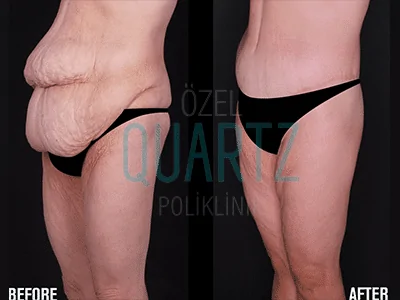 Can you Get Fat Again After a Tummy Tuck?
Can you Get Fat Again After a Tummy Tuck?
While a tummy tuck can remove excess skin and fat, it is not a permanent solution and it is possible to gain weight after the procedure.
The results of a tummy tuck can be maintained with a healthy diet and regular exercise, but it is important to understand that the procedure does not prevent future weight gain.
It is important to be realistic about the results of a tummy tuck and to understand that it may not be possible to achieve a completely flat tummy or to completely eliminate all excess skin and fat from the abdominal area.
It is also important to maintain a healthy lifestyle in order to maintain the results of the procedure.
What Are the Cons of a Tummy Tuck?
Tummy tuck can be an effective way to improve the appearance of the abdominal area, but it is not without risks and potential complications.
Some potential cons of a tummy tuck include:
- Pain and discomfort: The procedure can be painful and may cause discomfort for several days or weeks after the procedure. Pain medication may be needed to manage discomfort during the recovery period.
- Swelling and bruising: The abdominal area may be swollen and bruised for several weeks after the procedure.
- Scarring: The procedure leaves a scar, which may be visible depending on the individual’s skin type and the location of the incision.
- Risk of infection: As with any surgical procedure, there is a risk of infection after a tummy tuck.
- Risk of complications: There is a risk of complications associated with any surgical procedure, including bleeding, blood clots, and anesthesia complications.
- Costs: A tummy tuck is a major surgery and can be expensive. It is generally not covered by insurance, and the costs of the procedure may not be fully covered by financing or payment plans.
It is important to carefully weigh the potential pros and cons of a tummy tuck and to discuss the specific goals and expectations of the procedure with a qualified plastic surgeon before deciding whether the procedure is right for you.

